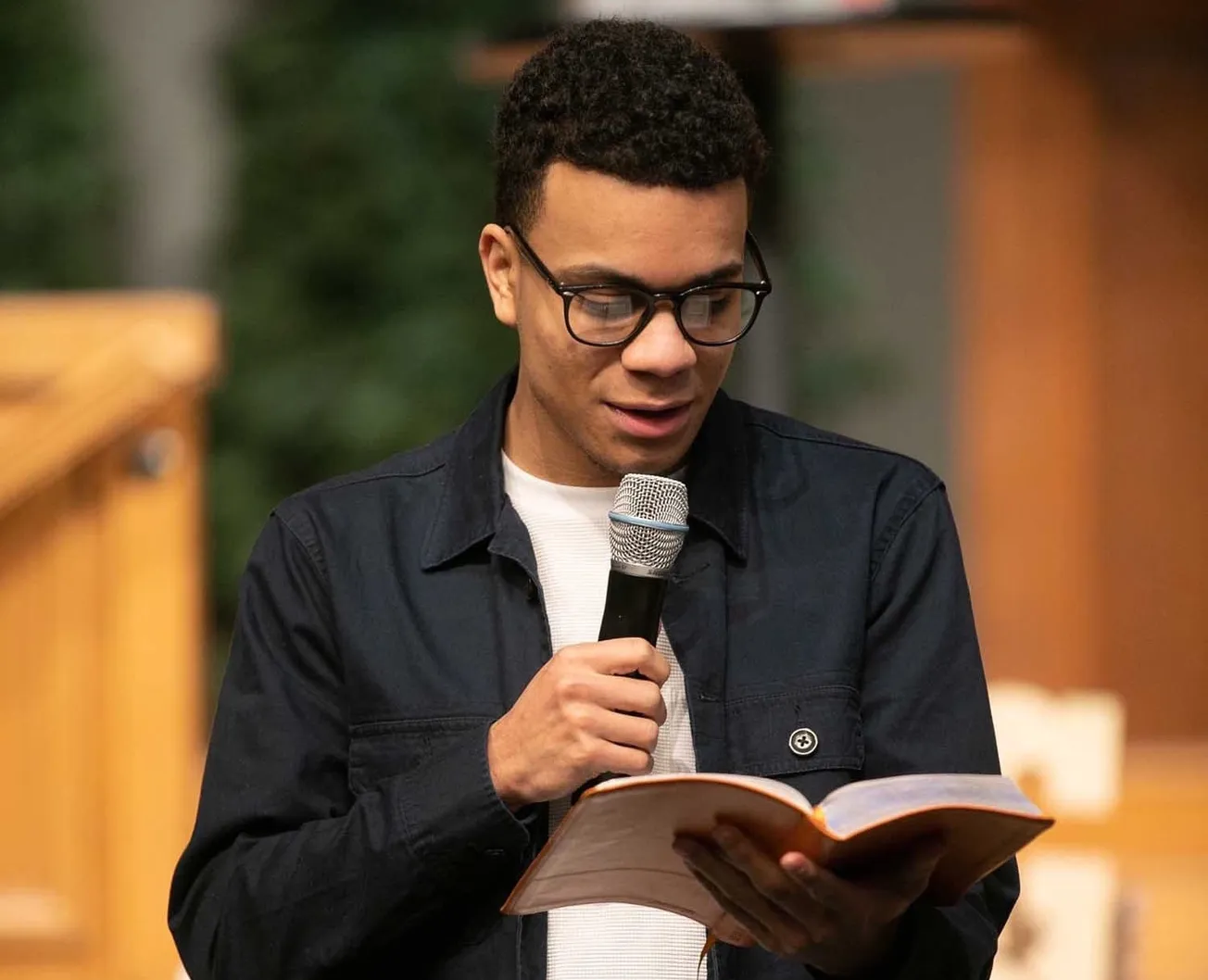Table of Contents
Today is Trinity Sunday, which appropriately comes after Pentecost (the Father’s giving of the Spirit through the Son). The appropriateness reflects the history of the church’s formulations of biblical doctrine, which took over three centuries to thrash out. These formulations were first and foremost concerned with the identity of the Son and the nature of his relationship with the Father; once that was sorted out trinitarian doctrine followed as a natural consequence, with the full articulation of the person of the Spirit. This process was natural since it reflects the nature of God’s revelation itself: the Son is the ‘lynch-pin’ and ‘entry-point’ into all thinking about God as Trinity – Father, Son and Holy Spirit (e.g. Matthew 11:27, John 1:18, 14:6). We only come to the Father through the Son, and in knowing the Son we receive the Spirit.
Three centuries sounds like a long time to come a mind on these things – and it is! But our perception is somewhat skewed by the instant gratification and ‘everyone-is-an-expert-theologian’ culture we have on social media. Our forebears were careful, patient, and had a genuine awe and consideration for the person they were doing their thinking about. They came from an age where human knowledge was not the starting-point of thought in creation, but derivative of a higher mind. Our modernist mindset – where we are the starting-point of thinking and knowing (Descartes’ ‘I think, therefore I am’) – leads towards an arrogance we see in so many people (and, sadly, in so many Christians) today. The ease with which we say ‘I think of God as’ and say what we think and feel to be true (with no evidence or sound thinking) was anathema to the ancients, and an insolence that could only offend the one they did their thinking about. They also lived in an age where writing could be a life or death enterprise. They knew the stakes.
Part of the issue the Fathers encountered is that they had no appropriate language to describe the reality of what they saw in the Scriptures. Further, the language they were using – Greek (mostly) – had its words entrenched in the philosophy of the Greeks. Latin had a similar problem. So they required not just the development of language (including some new words like ‘Trinity’), but the explanation of what those words mean – and don’t mean. ‘Apophatic’ theology – thinking about God by describing what he is not – is just as important as saying what he is like.
Today as we reflect on, and pray to, our triune God, there are three words to grow to know to help us understand our God better. These three words were key in the history of trinitarian thinking in the early church.
The importance of one letter, ‘i’: homoousios vs homoiousios
‘Homoousios’ is a Greek word that means ‘same substance’. ‘Homoiousios’, on the other hand, means ‘like substance’. This one letter ‘i’ is emblematic of what was at the heart of the original Nicene Council’s debate in AD 325. Was the Son of the same substance as the Father, and thus co-equal in deity, or only ‘like’ the Father in substance, meaning that he would be therefore inferior to God and created by God? Arius, who was a prominent churchman of the time, was famous for saying ‘there was a time when the Son was not.’ In other words, the Son was created by God at some point. By affirming homoousios, our Fathers reflected the important truth John communicated so clearly: that Jesus is God and not created (John 1:1-3, 8:58, etc.).
The importance of one word: ‘filioque’
This word isn’t Greek; it’s Latin and means ‘and the Son’. It’s a word that appears in the Western Church’s version of the Nicene Creed, but not the Eastern Church.
If you’ve studied any Roman history, you’ll know that eventually the empire became very unwieldy. They expanded all around the Mediterranean Sea (but not Scotland, they even built a wall to keep the Scots out). Functionally, over time this created two empires especially into the fourth and fifth centuries. Eventually they even had dual emperors, with one centred in Rome and the other in Constantinople. Linguistically, the West predominantly had Latin speakers, and the East had Greek. When the Roman Empire fell (in the West), the Roman Empire continued in the East (the Byzantine Empire) for another millennium.
The church reflected this political and administrative division. Eventually it resulted in what we now call the Roman Catholic Church, and the Orthodox Church. But the seeds were there from earlier. At the Council of Nicaea in 325, only one Bishop from the West bothered to show up. But the theological ties remained, and arguably the greatest theologian in church history – Augustine of Hippo, who was Latin speaking – was a big fan of his fellow African theologian, Athanasius. As a result, he enshrined Athanasian (that is, Nicene) theology in the West through his own writing.
This division was eventually reflected in the Nicene Creed itself, however. When the Nicene Creed speaks of the Spirit, the Western Creed (which we confess) says that the Spirit ‘proceeds from the Father and the Son’. The Easterns didn’t want to include this phrase because they were using the creed to preserve something about the Father (his ‘monarchy’, that is, the Father as the priority of God’s ‘godness’ in the Trinity). While this is true to an extent, the Westerns were trying to preserve a different truth with the creed, namely the inextricability of the Spirit from the Son/Word. The Spirit is not a separate means of knowing the Father from the Son; rather, the Spirit is received by us from the Father through the Son.
Both East and West were holding truths dearly, and neither would disagree with the other truth as such, but the absence of the ‘filioque’, when misunderstood, leads to error. In particular, it leads to the mistake of thinking that the Son/Word and the Spirit are separate means of knowing God. It’s no wonder that, in many Pentecostal and Charismatic circles, where the emphatic biblical evidence behind the filioque is completely overlooked, the phrase is rejected. Instead, experience as an avenue to know God, separate from the Son/Word, is pursued, because some equate experience as a location of where to find the Spirit. And some pentecostals reject the trinity, too.
The presence of the filioque clause is also at times misunderstood. It’s a statement about the relationship the Spirit has with the Son and the Father. It’s not a denial of the ‘priority’ of the Father. But when this is misunderstood, co-equality of persons in the Trinity in their deity is mistaken as co-equality in will and independence. This leads to tri-theism, where the Trinity is so separated that there is no functional ‘oneness’ between the three. It also tends to lead towards a weird ‘social trinitarianism’, so in line with our anti-authoritarian age, whereby the persons of the Trinity take it ‘in turns’ to be the one in control. No surprises, but invariably the Father is associated with the Old Testament, the Son with the New Testament, and the Spirit with the last two millennia. Once again, this view is in complete denial of the Bible’s witness to the nature of God and how he acts in this world but finds very warm hearing in somestrands of Pentecostalism.
Finally, a dance: ‘perichoresis’
In all this thinking about God, the Fathers introduced another word: perichoresis. This is a Greek word, meaning ‘to make room for’ or ‘to contain around’. Perhaps the best way to imagine the idea is like that of a dance, where the dance partners – this case three – continually inhabit the ‘space’ of each other.
Why is this so important? It is important because the Nicenes were trying to avoid speaking about God’s ‘godness’ as a fourth and underlying ‘substance’ which each person shared. Diagrams of the Trinity are problematic, but you can see the problem expressed in the diagram to the left below. It gives the impression that the Father, Son, and Spirit are each a ‘part’ of God, or that there is a fourth being below the other three, or that there is only one God but he wears three ‘masks’ or personas.
No, the Fathers recognised that they needed to account seriously for the language of mutual indwelling and inhabiting and identity that the Scriptures employ for the Trinity: the classic Johannine statements of ‘I am in you and you are in me’, or ‘The Son is one with the Father’ or ‘as I am in the Father and the Father is in me’, and so on. God’s godness is not separate to his relational (or social) nature, of mutual indwelling and co-inhabiting in eternity. God’s godness is not a fourth ‘thing’ underlying the three persons. God’s ‘godness’ is the three persons in ‘perichoretic unity’: a mutual ‘making space’ for the other in one being, in eternity. Once again, diagrams are always inadequate, but the diagrams to the right below try to capture this, called a ‘triskelion’ in ancient art.
Where to from here? All this is in many ways a cautionary tale. We ought to remember that the Fathers bequeathed to us an immense wealth, not least a desire to ‘think God’s thoughts after him.’ We ought not to sneeze at their immersion in the Scriptures and lifetimes of devotion to thinking well about God. Our pride to think we know better by just feeling a conviction or spending a few moments thought on it is so woefully inadequate.
But on the other hand, it’s an exciting tale as well, because the more we delve into the mystery of God’s nature the more we are captivated and delight in the beauty of his nature. We know our God better, and so love him more. This knowledge of God is not dead or sterile, but when we encounter the true and living Godas he is, then we cannot help but cast ourselves at his fee in adoration and praise and wonderand be transformed by him to his glory.









